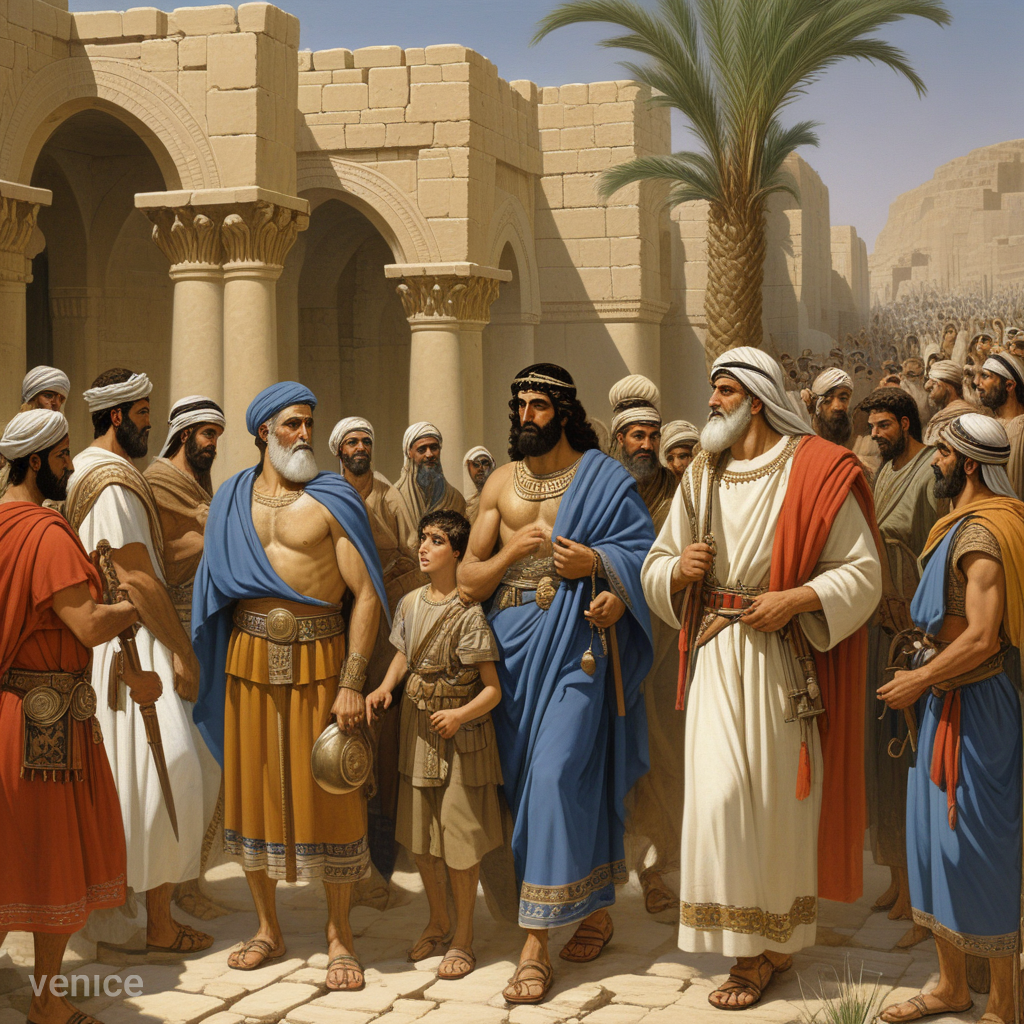Introduction and Historical Context
Many people are called by God to live in marriage and to build a family, a vocation rooted in love and faith. This theme is also central to the Book of Tobit in the Holy Bible. While not a historical account, the Book of Tobit is a didactic narrative, written to teach spiritual truths and life lessons. Although its primary purpose is instructional, the story is set in a specific historical and geographical context, providing a rich backdrop for its moral and theological messages.
Historical Background
In 930 BC, the Kingdom of Israel split into two parts: the Northern Kingdom (comprising 10 tribes with its capital in Samaria) and the Southern Kingdom (comprising two tribes, Judah and Benjamin, with its capital in Jerusalem). In 722 BC, the Assyrians, a powerful empire located in what is now Iraq, conquered the Northern Kingdom. They deported approximately 50,000 Israelites to Assyria, out of a population of 200,000, and resettled foreigners in Samaria. Over time, these settlers intermarried with the remaining Israelites, forming the group known as the Samaritans.
The Israelites taken to Assyria lived in diaspora, a scattered community far from their homeland. The Book of Tobit reflects the experiences of these exiled families. The story takes place in Mesopotamia, a region between the Euphrates and Tigris rivers.
By 612 BC, the Assyrian Empire was overtaken by Babylonia, which was located in the same region, south of modern Baghdad. In 587 BC, the Babylonians conquered the Southern Kingdom, including Jerusalem, and deported many educated and elite citizens to Babylon. When the exiles arrived in Babylon, they encountered the descendants of the Northern Kingdom’s diaspora, who were already under Babylonian control.
Main Characters and Story Summary
The story centers on Tobit, a devout and charitable man living in Nineveh, who remains faithful to the Law of Moses even in exile. Known for his acts of mercy, such as burying the dead despite its prohibition by authorities, Tobit is a model of righteousness. However, his faith is tested when he becomes blind after bird droppings fall into his eyes—a tragic turn that symbolizes his trials. Facing financial hardship, Tobit prays to God for relief, even longing for death.
In Ecbatana, another character, Sarah, suffers greatly because a demon named Asmodeus has killed seven of her husbands on their wedding nights. Overwhelmed by despair and shame, she also prays for death. God hears the heartfelt prayers of both Tobit and Sarah and sends the Archangel Raphael to intervene.
Tobit remembers a sum of money he had deposited in Media and sends his son, Tobias, to retrieve it. Raphael, disguised as a human, accompanies Tobias as his guide. During their journey, Tobias catches a large fish, and Raphael instructs him to preserve its liver, heart, and gall, explaining their healing properties. When they arrive in Ecbatana, Tobias meets Sarah. With Raphael’s guidance, Tobias marries her and, using the fish’s heart and liver, drives out the demon Asmodeus. Tobias and Sarah are finally able to live in peace.
The couple returns to Nineveh with the retrieved money. Tobias uses the fish’s gall to cure his father’s blindness, and the family rejoices, praising God for His mercy. As Tobit approaches the end of his life, he advises his family to remain faithful to God and prophesies the restoration of Israel. Following Tobit’s death, Tobias and Sarah leave Nineveh, heeding Tobit’s warning of the city’s impending destruction.
Message and Themes of the Book of Tobit
The Book of Tobit is a profound story of faith, family, divine providence, and healing. It emphasizes God’s active role in the lives of the faithful, even during times of trial and exile. Here are the key themes explored in the book:
- Faithfulness to God:
Tobit and his family demonstrate steadfast adherence to God’s commandments, even in adverse circumstances. Acts of charity, such as burying the dead and maintaining purity, showcase their unwavering commitment to their faith. - Divine Providence:
The narrative illustrates God’s care for His people. Tobit and Sarah’s desperate prayers are answered through Raphael’s intervention, showing that God works in mysterious and compassionate ways. - Healing and Restoration:
Physical and spiritual healing are central to the story. Tobit’s blindness is cured, Sarah is freed from demonic oppression, and both families experience restoration, highlighting God’s redemptive power. - Marriage and Family:
The sacred covenant of marriage is portrayed in Tobias and Sarah’s union, which is grounded in prayer and trust in God. Their marriage not only brings joy and healing to their families but also serves as a symbol of divine blessing. - Angelic Guidance:
Raphael’s role as a divine helper emphasizes the belief in angels as protectors and messengers of God. His guidance of Tobias symbolizes God’s presence in life’s journey. - Prayer and Trust:
The book underscores the power of prayer in moments of despair. Tobit and Sarah’s heartfelt appeals to God reveal the importance of trusting in His timing and wisdom. - Justice and Charity:
Tobit’s commitment to acts of mercy and justice reflects the importance of living a virtuous and compassionate life, even in exile. - Exile and Hope:
The book addresses the pain of living in exile but offers hope for restoration, demonstrating God’s faithfulness to His covenant.
Conclusion and Relevance
The Book of Tobit teaches timeless lessons about faith, family, and divine providence. It reminds readers that God is always present in their lives, even when they are unaware of His workings. Just as He sent Raphael to guide Tobias and heal his family, God continues to send His “angels” to assist and protect us in our journeys. Through trust, prayer, and obedience, we can experience God’s love, mercy, and restoration in our lives.


Leave a Reply